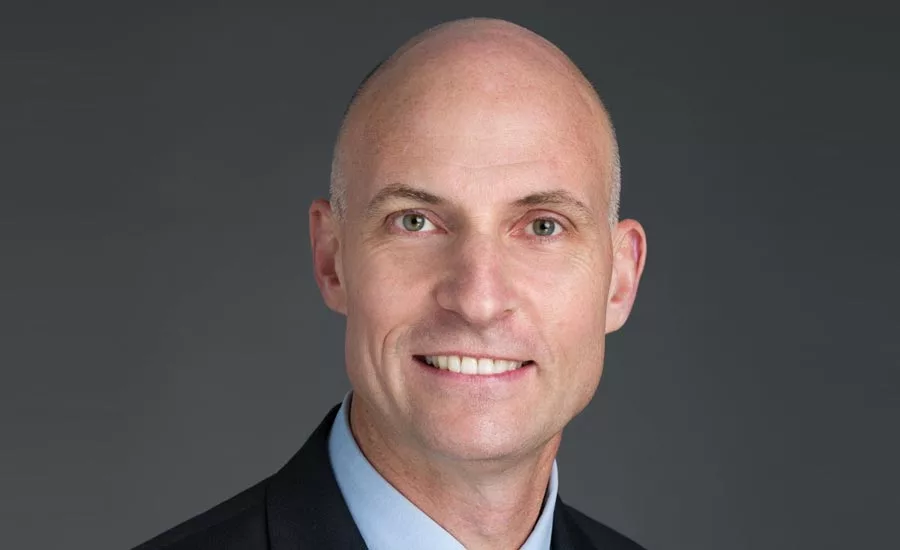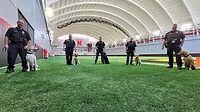Enterprise Services
Hospitality security adjusts to COVID-19 constraints
While COVID-19 has slowed the hospitality industry, security plays a more pivotal role than ever and the ongoing pandemic is challenging security professionals to adjust and adapt to new rules and procedures.

martin-dm / E+ via Getty Images

Erik Antons
(Photo courtesy of Antons)

Andy Williams
(Photo courtesy of Williams)

Jeffrey Slotnick
(Photo courtesy of Slotnick)

Daniel Danson
(Photo courtesy of Danson)
Even before the pandemic tore into the hospitality industry, hotel security was a challenging landscape.
“The things people do in hotel rooms are things they would never do at home: prostitution, drug abuse. Suicide is huge, people kill themselves in hotel rooms because they don’t want to do it at home,” says Erik Antons, former Chief Security Officer of a major international hotel chain and a former Chair of the Hotel Security Working Group under the U.S. Department of State Overseas Security Advisory Council.
Guests come and go all the time. They trash the rooms and steal from each other. It doesn’t help that liquor sales are often key to balancing the budget. “When alcohol is a huge part of the revenue, you have issues there,” Antons adds.
With the onset of COVID-19, things have gotten even more challenging, as hotel security is increasingly tasked to do more with less.
The New Landscape
The hotel industry came to a halt in the early months of the COVID-19 pandemic and things are only slowly starting to pick back up. Yet the burden on security is no less than it was before, and in many ways, the job has gotten harder.
“Occupancy levels dropped 90% for several months and have only recently returned to a consistent 40%, with many hotels still closed,” says Daniel Danson, Marriott’s Senior Director, Safety & Security – Americas. “Despite the low occupancy levels, we continue to have a significant number of incidents resulting in a much higher incident-to-occupied-room ratio than we have historically seen. We have seen a dramatic increase in heart attacks and suicides over the past few months, and continue to have increased numbers of fraud and guest-on-guest type incidents.”
Even hotels that have closed their doors amid the pandemic still require a security presence. “Someone has to turn on the heat, run the water, deter the homeless from just moving in. You still have to control premise liability: What if someone gets mugged in the parking lot?” says Karl Perman, president and co-founder of risk consultancy CIP CORE, and a member of Security’s Editorial Advisory Board.
Even as the need for security persists, many hospitality chains have pared back their security budgets.
“Security directors who used to have an entire team, they have seen their teams reduced to just a few people,” Antons says. “In some cases, entire corporate departments are being eliminated, so there is no centralized security department. There is no one providing corporate guidance, no one providing policies and procedures.”
As a result, “you have the same area you need to patrol and secure against things like theft and vandalism, but you are doing it with a reduced workforce,” he says.
Other Risks Persist
Even in this strained environment, other common risks persist in the hospitality world. Prostitution is a perennially complex issue for hotel security, for example, while human trafficking is an increasing area of concern.
When it comes to human trafficking, security needs to work hand in glove with front desk staff to spot suspicious actors.
“Let’s say a foreign national, a middle-aged male, is traveling the world with a young boy who doesn't appear to be the man’s son,” Antons says. “He checks in at the hotel and the kid is standoffish, he’s hiding behind the man. The guy acts a little odd, he presents documentation that looks odd, some obscure custodial papers for the boy. The staff needs to be trained to look for this.”
Prostitution represents an even thornier problem, as it may be legal to a greater or lesser extent depending on the locale. In such cases, “the role of security is to manage it,” Antons says.
“You have to watch out for perceptions. Even if it’s legal in Singapore, what if other guests from the United States see a prostitute walking down the hall with a guest?” he says. “Security can ask the prostitutes to register with them. They can make ‘clear the house rules’: minimize your exposure in public areas as much as possible, don’t do anything illegal in the room.”
A New Approach
Hospitality security professionals have taken a hard look at the complex risk landscape within their organizations after the 2017 Mandalay Bay mass shooting incident in Las Vegas, and many have gone on to implement changes in their protocols.
In the past, many security professionals may have shied away from so-called ‘wellness checks,’ out of deference to guest privacy. “Depending on your brand, your segmentation, you might never enter a guest room,” Danson says. “Las Vegas taught us that that was no longer acceptable.”
After the Mandalay Bay incident, “we started to see that the private space wasn’t so private,” says Andy Williams, VP Business Development & Quality Assurance at Safe Hotels, a hotel safety and security certification organization.
In the wake of the shooting, “the main industry change was to room-check ‘do not disturbs’ every 24 hours,” Williams says.
At Marriott, as in many other chains, “we created a policy that put us into rooms on a more regular basis with a clear purpose: We are looking to see if there is suspicious activity in that room,” Danson says.
Leveraging the Team
Under these emerging policies, security is striving to put more active eyes on guest rooms — right at a time when COVID-related staff reductions are making it harder for security even to sustain normal operations.
Stretched at both ends, many are looking to leverage non-security hotel personnel as a force multiplier.
“Housekeepers were always directed to keep an eye open — you’d get reports of drugs or drug paraphernalia, or potential human trafficking,” Danson says. “Now you go into a room for the sole purpose of identifying suspicious activity. That is a different mindset.”
Even if there’s only one person working the front desk, “they still need to be making the rounds,” Perman says. “They need to be knocking on doors and making contact, making conversation. You need them to keep up that level of human intervention.”
Corporate-level security executives can support this approach by creating training and materials to bring frontline managers and operations personnel up to speed on risk mitigation. Danson put this into play as he briefed hotel-level personnel on the risk landscape around COVID-19.
“When you are dealing with 5,600 hotels you can’t answer everybody’s questions independently. We need resources around contact tracing and the CDC materials aren’t written for the layman. We had to take everything that was out there created by others, and make it usable for our own industry,” he says.
The effort to engage frontline staff on issues of safety and security is key to maintaining a strong security posture in the current climate.
“Every person you can train as an agent for security is valuable,” Antons says. “In the middle of the night when something happens, they can direct people, they can understand the fundamentals and take charge. Every person who comes through a security awareness seminar is an extra set of eyes out there who can report something that doesn’t look right.”
Tech to the Rescue
In addition to leveraging staff as a force multiplier, hospitality security can utilize technology to expand its capabilities.
In some cases, existing technology can be used to bolster security while simultaneously mitigating the reputational risk that comes with a potential COVID-19 outbreak, for example.
“The same technologies you use for intrusion detection are the ones we use for detecting infection,” says Jeffrey Slotnick. a senior regional VP for ASIS International and a member of the ASIS Professional Standards Board, as well as president of security consultancy Setracon.
“A passive infrared detector can also be used to detect temperature in human beings, so a video camera that is infrared capable can detect fever in a human, and that is being done in a lot of places,” he says. “It comes from the security community, but it can be used in support of health and safety.”
Cameras in general can be used to augment security forces that may have been pared back by budget cuts. Some offer motion detection, with analytics to differentiate between, say, an animal and a human in the parking lot. Such capabilities can give a limited security team broader reach.
“You can still evaluate people, you can still watch people, you just do it remotely,” Slotnick explains. “You put people in an operations center where they can monitor video. It’s just a different way of doing business.”
Through COVID-19, though, technology can be a double-edged sword. For example, some hotels have turned to mobile-phone-based check-in to provide a touchless experience. “From a security perspective there are unintended consequences there,” Danson says. “Now you never have to go to the front desk, you never have to encounter a person.”
For hotels that go this route, it’s doubly important to find new means of engagement. “We have to make an effort to make more contact. Even if we are not cleaning rooms, we are still going into rooms, we are identifying folks outside of their room and engaging with them,” Danson says.
Going forward, hotel security will need to train and equip frontline and operational staff to take on this enhanced role. “They need to be able to recognize suspicious activity, to know how to engage with somehow, to know when they need to report it to someone else,” Danson says. “The challenge is to balance those responsibilities with the person’s need just to do their regular job.”
In this environment, corporate-level guidance is, and will continue to be, all the more important.
“It’s easy to say that you don’t allow a customer to check in without a mask, but there were many times where that conversation went poorly,” Danson says. “You need to give them the tools to convey that message, and you need to give them the support.”
Eventually COVID-19 will recede, but new risk categories will likely continue to unfold in hospitality. Security professionals can help to steer a course by reminding upper management that risk is more than just a monetary calculation.
When allocating resources in support of operational safety and security, “the chief of security needs to be informing corporate leadership of the potential risks, so that it becomes a risk-based decision and not just a budget decision,” Slotnick says. “Security has to make the case for risk, whether it’s a risk to brand reputation or other forms of risk.”
Looking for a reprint of this article?
From high-res PDFs to custom plaques, order your copy today!







